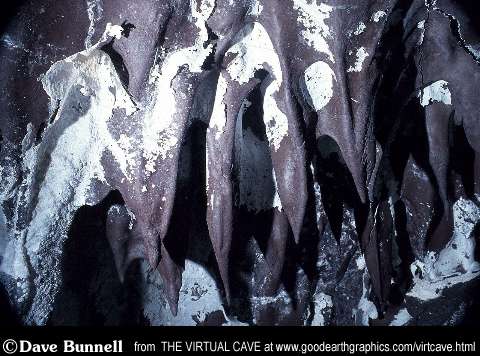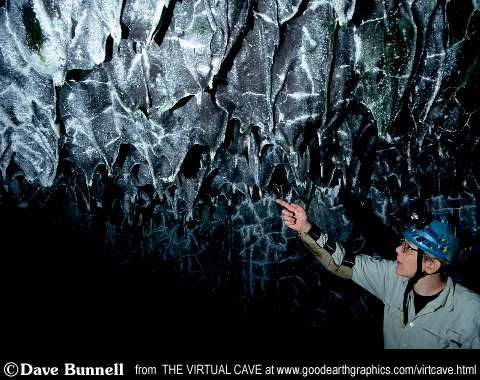

| Unlike tubular lava stalactites,
which are extruded by escaping gases, the shark tooth stalactite grows
by accretion. In most cases, as the level of flowing lava inside an active
tube fluctuates, it coats protrusions on the ceiling with a thin veneer
of lava. The original protrusion may have been a small driplet formed
as the molten ceiling cooled. This results in a broad stalactite, usually
tapering to a point. A cross section of such a stalactite will show successive
layers, just as tube passages contain linings that may be several layers
thick from successive flows. In both photos, the stalactites have been encrusted with secondary gypsum deposits. |


| Back to: | |
 |
Created: August 4, 2000
Author: Dave Bunnell |